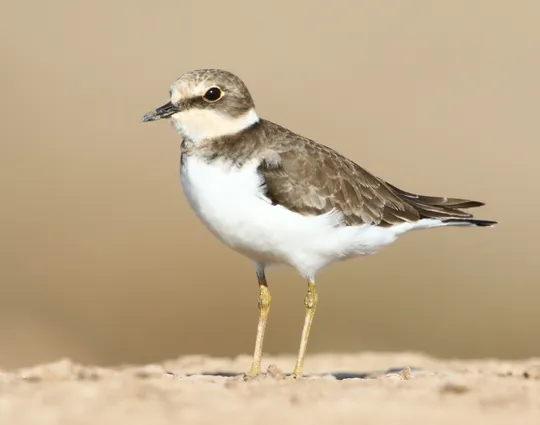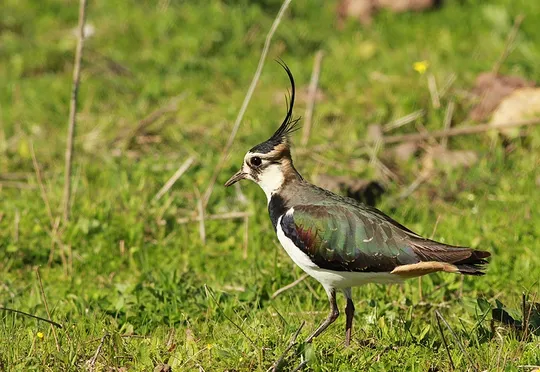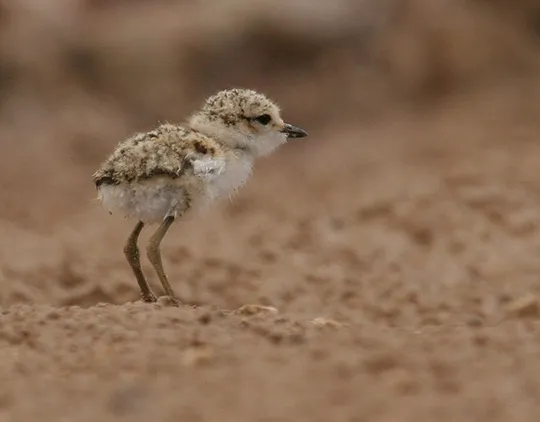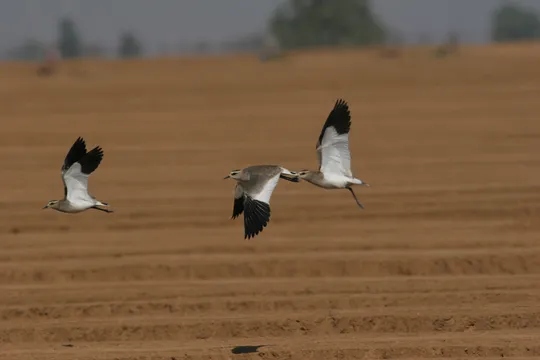Charadrius dubius
 Critically Endangered
Critically Endangered


| Habitats | Sandy Coastline, Wetlands with Shallow Banks |
|---|---|
| Presence In Israel | Migrant, Summer |
| Breeding In Israel | Breeder |
| Migration Types | Short Range / Partial |
| Zoographical Zones | Mediterranean |
| Landscape Types | Wetlands, Salt Ponds, Sandy Beach, Mud Plain |
| Vegetation Densities | Low |
| Nest Locations | Ground |
| Diet Types | Invertebrate |
| Foraging Grounds | Ground |
| Body Sizes | Small (up to 500g) |
| Threat Factors | Habitat loss and fragmentation, Direct disturbance from human activity, Increased predation from invasive and eruptive species, Wetland Drainage & Pollution |
The Little Ringed Plover is an extremely rare summer breeder, a common passage migrant and a relatively rare winter visitor. A few pairs apparently nest along the Jordan and Yarmukh rivers and on the northern Dead Sea shores, but these areas are difficult to reach and information is limited. A family with chicks was seen at the mouth of the Jordan River to the Dead Sea in spring 2017 (Amir Balaban, pers. comm.) and nesting was observed in the Sodom Basin in spring 2005 (Yoav Perlman, pers. comm.). Until the 1960s, hundreds of pairs nested in Israel along the Mediterranean coast, in the coastal streams, in the Jordan and the Northern Valleys (Paz, 1986, Shirihai 1996). The coastal population disappeared almost completely during the 1970s, apparently because of human activity, as well as the rise in the number of invasive and eruptive species. In the 1980s there were still 100-150 pairs nesting in Israel, mostly along the Jordan Valley: 30 in the northern Dead Sea, 30 between Jericho and Bet She’an, 17 in the Bet She’an and Jezreel valleys and 5-10 pairs in the northern Coastal Plain (Shirihai 1996). The species responds rapidly to suitable breeding conditions, thus tens of pairs nested along the Jordan and Yarmukh rivers in summer 1992, following intense winter floods that created bare banks and islets along the streams (Amitsur Boldo, pers. comm.).
The Little Ringed Plover has been affected mainly by the destruction and modification of its habitats. The Mediterranean coast and estuaries have been contaminated by tar, oil, trash, sewage and intensive human activity. In addition, the coastal streams were polluted, straightened and regulated, and agricultural areas extend to their banks, leaving no suitable natural habitat for the plovers. Fishponds and reservoirs established on the Coastal Plain and in valleys are not a suitable substitute, both due to the intensive human activity around them and because of the rise of invasive and eruptive species that increase predation pressure on ground-nesting birds. The Jordan River remained relatively protected and clean, but the amount of flowing water is limited and the interruption of water flow from Sea of Galilee (by a dam) put a stop to winter floods, which had once created bare sandy islets on which the plovers nested.
No specific conservation measures have been taken for this species to date.
The Little Ringed Plover is classified as Critically Endangered (CR). It has been affected mainly by the drainage, pollution and disturbance of freshwater bodies and by direct disturbance and pollution along beaches. There are currently very few records of Little Ringed Plover nesting in Israel and it seems not to nest every year. There may be a few pairs nesting in the southern Jordan River and along the northern Dead Sea shores. Systematic surveys should be conducted in these areas.
There is a lack of comprehensive, up to date information on the status of the Little Ringed Plover in potential breeding areas. Surveys should be conducted along the Dead Sea and Jordan River shores and if necessary, management procedures be implemented to improve and ensure the existence of active nesting sites.
- פז, ע. 1986. עופות. מתוך אלון, ע. (עורך), החי והצומח של ארץ ישראל. כרך 6. הוצאת משרד הביטחון, ישראל.
- Shirihai, H., 1996. The Birds of Israel. Academic Press, London.
- Symes, A. 2013. Species generation lengths. Unpublished, BirdLife International.
- Species page at Birdlife International
Current Occupancy Map
| Data Missing | Sporadic | Limited Sites | Low Density | High Density |
|---|---|---|---|---|
| 0 | 0 | 0 | 0 | 0 |
Distribution maps
The maps presented here provide visual information on the distribution of species in Israel from the past and present, and the changes in occupancy and breeding density during the comparison period. For further reading
Relative Abundance 2010-2020
Breeding density values in the current decade as determined from experts' opinion and observations from databases.
| Data Missing | Sporadic | Limited Sites | Low Density | High Density |
|---|---|---|---|---|
| 8 | 12 | 12 | 21 | 19 |
Relative Abundance 1980-1990
Density values based primarily on the book The Birds of Israel (Shirihai 1996).
| Data Missing | Sporadic | Limited Sites | Low Density | High Density |
|---|---|---|---|---|
| 5 | 14 | 14 | 17 | 22 |
Occupancy 1990-2020
The map shows differences in the species breeding distribution between the 1980's breeding map and the current weighted breeding evaluation. Negative value - species previously bred in the grid and is not presently breeding; positive value - species has not previously bred in the grid and is currently breeding.
| Data Missing | No Change | Occupancy Increase | Occupancy Decrease |
|---|---|---|---|
| 6 | 35 | 1 | 9 |
Change in Relative Abundance 1990-2020
The map shows the changes in the relative abundance of a species in each of the distribution grids between the breeding map of the 1980s and the weighted current breeding evaluation. Negative values - decline in abundance; positive values - increase in abundance; zero - no change in abundance.
| 80 to 100 | 50 | 20 to 30 | No Change | 30- to 20- | 50- | 100- to 80- | Data Missing |
|---|---|---|---|---|---|---|---|
| 0 | 4 | 2 | 22 | 12 | 14 | 11 | 16 |
| Rarity | |
|---|---|
| Vulnerability | |
| Attractiveness | |
| Endemism | |
| Red number | |
| Peripherality | |
| IUCN category | |
| Threat Definition according to the red book |
 Contributed:
Contributed: 





